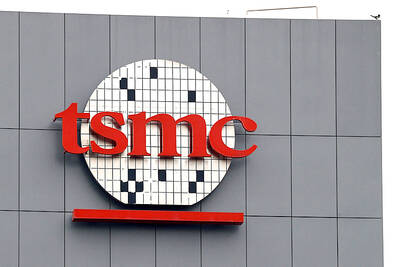Vice Media Group LLC has filed for bankruptcy protection and struck a deal to sell itself to creditors, a precipitous fall for the media upstart that once boasted a US$5.7 billion valuation.
The developments cap a tumultuous few months for the firm, which began as an alternative magazine in Montreal nearly three decades ago and captured the attention of young viewers globally with documentary-style videos. It shared a Pulitzer Prize in 2020 and multiple Emmy wins for Vice News Tonight.
Its rapid downfall underscores the challenges facing digital media companies, which are struggling as advertisers cut spending during an uncertain economy and route marketing toward technology platforms from Facebook and Google to TikTok.
The Brooklyn-based company listed both assets and liabilities in the range of more than US$500 million to as much as US$1 billion in a Chapter 11 petition filed in Southern District of New York.
In a separate statement, Vice announced that it had reached a deal with creditors including Fortress Investment Group LLC, Soros Fund Management LLC and Monroe Capital LLC to purchase its assets for US$225 million and assume significant liabilities.
The agreement allows for rival bidders to emerge.
“We will have new ownership, a simplified capital structure and the ability to operate without the legacy liabilities that have been burdening our business,” Vice Media cochief executive officers Bruce Dixon and Hozefa Lokhandwala said. “We look forward to completing the sale process in the next two to three months.”
Fortress Credit Corp ranked among the biggest secured creditors, with claims totaling about US$475 million, the filing showed yesterday.
Vice Media has secured commitments for debtor-in-possession financing from its creditors, including consent to use more than US$20 million of cash to keep its operations going.
Vice Media secured a US$450 million investment from private equity firm TPG Inc in 2017, which valued the firm at US$5.7 billion. The figure was startling for a media upstart, especially while so many of its industry peers struggled to generate profits. Other investors have included Walt Disney Co and Fox Corp.
In the filing, Vice Media estimated it has more than 5,000 creditors and that it would have funds for distribution to unsecured creditors.
Its bankruptcy filing is a milestone for the digital media arena.
Vice Media in February said that Nancy Dubuc was leaving the company after five years as chief executive officer, and then late last month it shuttered its flagship TV news show and laid off more than 100 employees.
Vice News Tonight started in 2016 as a newscast on HBO and won acclaim for its coverage of a white nationalist rally in Charlottesville, Virginia. HBO ended that partnership in 2019.
Recently, the show aired on Vice TV, the company’s cable channel.
BuzzFeed Inc earlier this year shut down its news operation and online publisher Insider Inc said it would lay off about 10 percent of its employees.

Anna Bhobho, a 31-year-old housewife from rural Zimbabwe, was once a silent observer in her home, excluded from financial and family decisionmaking in the deeply patriarchal society. Today, she is a driver of change in her village, thanks to an electric tricycle she owns. In many parts of rural sub-Saharan Africa, women have long been excluded from mainstream economic activities such as operating public transportation. However, three-wheelers powered by green energy are reversing that trend, offering financial opportunities and a newfound sense of importance. “My husband now looks up to me to take care of a large chunk of expenses,

SECTOR LEADER: TSMC can increase capacity by as much as 20 percent or more in the advanced node part of the foundry market by 2030, an analyst said Taiwan Semiconductor Manufacturing Co (TSMC, 台積電) is expected to lead its peers in the advanced 2-nanometer process technology, despite competition from Samsung Electronics Co and Intel Corp, TrendForce Corp analyst Joanne Chiao (喬安) said. TSMC’s sophisticated products and its large production scale are expected to allow the company to continue dominating the global 2-nanometer process market this year, Chiao said. The world’s largest contract chipmaker is scheduled to begin mass production of chips made on the 2-nanometer process in its Hsinchu fab in the second half of this year. It would also hold a ceremony on Monday next week to

TECH CLUSTER: The US company’s new office is in the Shalun Smart Green Energy Science City, a new AI industry base and cybersecurity hub in southern Taiwan US chip designer Advanced Micro Devices Inc (AMD) yesterday launched an office in Tainan’s Gueiren District (歸仁), marking a significant milestone in the development of southern Taiwan’s artificial intelligence (AI) industry, the Tainan City Government said in a statement. AMD Taiwan general manager Vincent Chern (陳民皓) presided over the opening ceremony for the company’s new office at the Shalun Smart Green Energy Science City (沙崙智慧綠能科學城), a new AI industry base and cybersecurity hub in southern Taiwan. Facilities in the new office include an information processing center, and a research and development (R&D) center, the Tainan Economic Development Bureau said. The Ministry

ADVERSARIES: The new list includes 11 entities in China and one in Taiwan, which is a local branch of Chinese cloud computing firm Inspur Group The US added dozens of entities to a trade blacklist on Tuesday, the US Department of Commerce said, in part to disrupt Beijing’s artificial intelligence (AI) and advanced computing capabilities. The action affects 80 entities from countries including China, the United Arab Emirates and Iran, with the commerce department citing their “activities contrary to US national security and foreign policy.” Those added to the “entity list” are restricted from obtaining US items and technologies without government authorization. “We will not allow adversaries to exploit American technology to bolster their own militaries and threaten American lives,” US Secretary of Commerce Howard Lutnick said. The entities